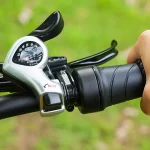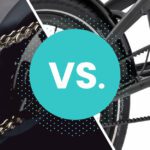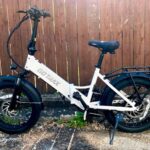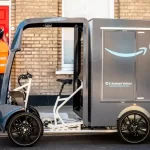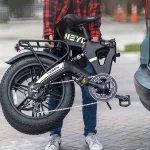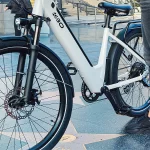Electric bikes don’t tend to be cheap purchases, so you want to get your choice of electric bike right. So when choosing an electric bike, there will likely be various considerations. One of these considerations may be which type of pedal assist sensor you wish the electric bike to have. Do you want a cadence sensor, or a torque sensor?
Whether you have a cadence sensor, or a torque sensor, determines how your pedaling engages your electric bike motor. This, in turn, determines how you unleash and control the electric power. Neither of these 2 types of sensor are better than the other, it’s down to rider preference.
There are different characteristics and considerations, with both of these sensors. I will talk about these in this article, to help you determine which one you feel would be best for you.
Table of Contents
Cadence and Torque Sensor Definitions
Below shows the main basic descriptions for both the cadence and torque sensors.
Cadence sensors – These simply register that the pedals are turning, to then engage the motor. How fast the pedals are turning, does not determine the speed the motor is operating. Here, setting the pedal assist level on the control panel, determines the speed of the motor. This, in turn, determines the speed of the electric bike. By the way, the control panel is typically an LCD display positioned on the handlebars.
Torque Sensors – These engage the motor when the rider starts pedaling. However, the speed of the motor is relative to the rider’s pedaling effort. The faster the rider is pedaling, the faster the motor speed. Likewise, the slower the rider is pedaling, the slower the motor speed. Remember the faster the motor speed, the faster the electric bike goes. You can still set the pedal assist level with the control panel here. However, this is to determine the amount of boost you get when you pedal. For example, whether the motor matches your effort, or doubles it.
How Cadence and Torque Sensors Work
Cadence Sensors
Cadence sensors work by magnets placed at intervals, around the inner side of the perimeter of a disc. As you pedal it turns this disc, so that these magnets pass by a sensor, which then engages the motor. Cadence sensors are situated between the bottom bracket and the crank.
There are some newer cadence sensors, that are tucked inside a special bottom bracket. Here, the sensor is reading the magnets, without any external part (the disc) showing. This means that the sensor is better protected.
Torque Sensors
Most electric bikes that have a torque sensor will either have one of the 2 following types. A strain gauge torque sensor, or a hall effect torque sensor. Below describes how these work.
Strain gauge torque sensor – These have a strain gauge, that measures the amount of torque/effort that is being exerted, when the rider is pedaling. This strain gauge samples 1000 torque pulses a second, to measure the torque. Then the sensor sends a very specific amount of power. This power is relative to the amount of torque applied to the pedals. Here, the sensor is situated on a little plate that sits between the axle of the back wheel and the frame.
Hall effect torque sensor – These involve a metal shaft between the cranks. This metal shaft has a magnetic field around it. When the rider stresses the cranks through pedaling, this stress becomes present in the magnet field around this shaft. The sensor then reads this stress in this magnetic field and then converts it to a voltage signal. This voltage signal is sent to the electric bike controller to determine the power of the motor. Again here, the power of the motor (speed of the electric bike), is relative to the pedal effort.
Riding Feel
As described above, cadence and torque sensors both operate differently. This means they offer a different riding feel to each other. Below describes this in further detail.
Riding Feel of Cadence Sensors
With cadence sensors it feels less like you’re doing it (that you’re less responsible). This is due to the fact that the speed is not determined by your pedal effort.
Cadence sensors allow for a casual, laid back riding feel, even whilst you’re riding at high speed. This is due to the fact that you can ride at an easy pace, even if the pedal assist is set to a high setting. Here, the bike will be doing all the work. You will find this beneficial if you want to get somewhere quickly, but in a relaxed manner. This does not mean to say that you can’t put in more pedal effort if you choose, for more of a workout. The pedal assist level can always be adjusted, to match your preferred pedal effort.
When cycling with a cadence sensor, you can pedal faster than the pedal assist level. In this instance, you may find the riding feel counterintuitive. This is due to that this extra effort is having no effect on how fast you’re going.
Riding Feel of Torque Sensors
Torque sensors allow for a natural and intuitive riding feel. This is due to the fact that they cause the motor speed to be relative to the pedal effort. Riding an electric bike feels more like riding a regular bike with this type of sensor.
Torque sensors allow the bike to feel like an extension of you. They can make you feel like you have bionic legs, which can be quite fun.
Smooth Riding Feel
Generally, torque sensors offer a smoother feel whilst cycling, compared to cadence sensors. This is due to the nature of how these 2 types of sensors operate. A torque sensor, sampling 1000 torque pulses per second, lends itself to being more responsive than a cadence sensor, having magnets passing by a sensor at intervals.
This does not mean, though, that cadence sensors are unresponsive, or do not allow for a smooth ride feel. A lot of cadence sensors are very responsive and smooth to ride with. It depends on the quality of any individual cadence sensor.
Number of Magnets Affecting the Riding Feel of a Cadence Sensor
Usually how responsive a cadence sensor is, is down to the amount of magnets it has. Some Cadence sensors have more magnets than others. The more magnets a cadence sensor has, the quicker it picks up the signal. This allows the motor to be more responsive which, in turn, allows for a smoother riding feel.
So if you’re buying an electric bike with a cadence sensor, you can look out for the amount of magnets the sensor has. This can help with comparing different electric bikes, to help you make your choice. Not all manufacturers advertise the amount of magnets their cadence sensors have though.
When Cadence Sensors are Ideal
Cadence sensors are great if you wish to cycle for transportation and/or exercise, but you come under any of the below:
- Have arthritis
- Nervous about your athletic ability
- Recovering or rehabilitating, after injury or illness
- Advancing in years
If you come under any of the above, then you can put the pedal assist setting to a level of your choice and pedal casually. Here, you can take it easy and let the bike do all the work. You can still get some exercise in, without over exerting yourself. After all, any exercise is better than no exercise. You can always lower the pedal assist setting later, as you get fitter or recover more. Many older adults like having cadence sensors for this reason.
Cadence sensors lend themselves to being ideal for commuting. A lot of people don’t commute by cycling, as they’re concerned they’ll arrive at the workplace sweaty. So if your electric bike has a cadence sensor, you can pedal casually to work, whilst again, your bike does the work. You can have a high pedal assist setting, that can allow you to get to work quickly, without you sweating. Remember, with cadence sensors, you can still pedal harder/reduce the pedal assist if you choose, for more of a workout. You can do this on the way home from work, where working up a sweat will be less of a concern.
Cadence sensors are lower in cost than torque sensors. This is due to torque sensors being a more advanced technology. So a cadence sensor is a suitable, cheaper option, if the cycles you make are a fairly consistent speed throughout. This can include long distance road cycling. Here, having to manually adjust the level of pedal assist when required, shouldn’t be a pain. This is due to that it’s likely you won’t need to be constantly doing this. You just select your required pedal assist level and pedal away. This sort of cycling is opposite to precise technical cycling, where a torque sensor can be more ideal. I discuss this further, in the section below.
When Torque Sensors are Ideal
Torque sensors are ideal for low speed technical cycling. This can include single track mountain biking. In fact, they are suitable for any cycling where you need to maneuver around tight conditions. For example, any off-road cycling, where there may be a lot of trees and obstacles close together. Cycling in busy town centers can be another example of this sort of cycling. This is due the amount of obstacles that occur in town centers.
The motor power being relative to the pedal effort, is why torque sensors are ideal for the above mentioned conditions. If you’re riding technical mountain bike trails, you want to apply a little bit of effort, for only a little power. Here, the torque sensor, being responsive to your pedaling effort, comes into its own. This is where you may especially appreciate the torque sensor, allowing the bike to feel like an extension of you.
Having a cadence sensor can feel counterintuitive in these riding conditions. It may be a pain, having to often manually change the pedal assist settings, if the amount of power required is always changing. This includes if you’re having to do a lot of stop and start cycling in busy town centers. In which case, you may find a torque sensor more suitable.
Riding in technical off-road conditions, can also be safer with a torque sensor. This is due to the power output being immediately responsive, to your pedal effort. With a cadence sensor, you may not have enough time to react, to lower the pedal assist level if suddenly needed. Conversely, a torque sensor can give you more control in tight riding conditions and when faced with sudden obstacles.
Cadence Sensor Considerations
Can Sometimes Feel Like it Takes a Long Time to Kick In
This is due to that the crank has to turn enough to prompt the magnets to pass the sensor. This can take a while, if you’re going up a steep hill in a hard gear. Here, it can take a lot of force, to move the crank even a little, for the pedal assist to function. Referring back to before, though, some cadence sensors have more magnets than others. So the more magnets a cadence sensor has, the quicker it will kick in.
Allow for Minimal Effort Up Hills
Even though torque sensors amplify your pedal effort to make hills easier to ride up. Many electric bike cyclists find that cadence sensors better allow them to maintain a casual riding pace up hills. This is especially if you’re using a high pedal assist setting and also if you have a high-powered motor. By the way, a high-powered electric bike motor would be 750 or 1000 watts. Although, your local laws may not permit you to have an electric bike of this power. So always check local laws before buying an electric bike.
Great for Warm-ups and Warm-downs
Cadence sensors are ideal, if you want to either warm-up or down, before or after an intensive exercise session on a bike. You can be putting in next to no pedal effort at all, whilst the motor is still keeping the electric bike moving.
Great for Getting Somewhere Quickly With Less Effort
You can just set the pedal assist to the fastest setting and pedal at a relaxing pace. This is suitable if you’re more concerned with using an electric bike for transportation and not for exercise. General transportation purposes can include commuting, school runs, shopping and visiting friends. Electric bikes can come into their own here, as they make it easier to carry children and shopping. Pedaling at a relaxing pace will still give you some exercise, though, by the way.
Easier to Control Battery Range
Having the pedal assist set to a certain level, whilst using a cadence sensor, generally allows you to better control the battery range. A disclaimer, though, is that you can only ever control the range so much. This is due to varying events throughout any given cycle, that affect range. Having a uniform amount of assistance, means that the range is more predictable. This can make it easier for you to plan your cycle journeys, both before and during.
In contrast to this, having a torque sensor can make the battery range more unpredictable. This is due to the fact that the level of motor power is dependent on your pedal effort. Remember, your pedal effort is likely to not be consistent throughout any given cycle.

Additionally, you can take advantage of a cadence sensor to increase battery range. You can have the pedal assist set at a preferred level, to help you throughout a cycle. For example, to reduce fatigue and alleviate inclines and wind resistance. However, you can always pedal as hard as you like at any point. Even if you’re pedaling at a higher effort than what the motor’s outputting. This can give you more of a workout, without this being more of a draw from the battery.
Torque Sensor Considerations
Torque Sensors Cost More than Cadence Sensors
As torque sensors are more advanced technology, they cost more than cadence sensors. They are not always a lot more though. It depends on the design and build quality of any given sensor. Usually, torque sensors tend to be on higher end electric bikes. So if an electric bike, with a torque sensor, costs more than an electric bike with a cadence sensor, it’s usually due to other features. The pedal assist sensor does not form a large part of the price of an electric bike though.
Can Encourage You to Pedal More
Due to the nature of torque sensors, they can encourage you to pedal harder. The fact that the harder you pedal, the more boost you get, can be very intuitive and fun. The psychology here is that you want to pedal harder to gain more speed. This can help you to get more of a workout.
Can Help Increase Battery Range (Depending on How You Use Your Electric Bike)
If you’re riding your electric bike fast, your battery should last longer if you have a torque sensor, instead of a cadence sensor. This is due to that to go fast with a torque sensor, you have to be pedaling fast. This means that the motor is not doing as much work to get you to a fast speed, compared to a cadence sensor. Here, the pedaling is sharing more of the effort. This, in turn, saves on battery and therefore increases range. This ties in with the above, with regard to that torque sensors get you pedaling more. As a general rule, the more you pedal on an electric bike, the more battery you save.
This sounds like a contradiction though, to where I mentioned before, that a cadence sensor can help you increase your range. However, it’s all down to how you use your electric bike. Remember, using a cadence sensor, you can pedal harder than the pedal assist level. This is for more exercise, without drawing more from the battery. Generally doing this, though, applies more to using the lower pedal assist levels.
Can Sometimes Seem to Not Provide Enough Torque
Sometimes, people can complain that a torque sensor doesn’t give the amount of torque they were expecting. A torque sensor may be providing a decent amount of torque though, even if it doesn’t seem as though it is. This can be for various factors. These can include the natural feel torque sensors help provide, making the torque seem less noticeable. Also, an electric bike cyclist may have used a throttle, or a more powerful electric bike before.
Bear in mind that other factors determine the torque of an electric bike. These are mainly the power of the motor (in watts) and the motor type. By the way, an electric bike motor type can either be hub, or mid drive. Mid drive motors provide the most torque, between these 2 motor types.
Torque Sensors are Sensitive
Remember torque sensors are sampling 1000 torque pulses per second. This causes them to be very responsive. Therefore, they are picking up on every tiny movement, which can cause them to be very picky. So if a torque sensor is not tuned, it can be problematic. If it’s tuned a little too low, then it’s going to be stiff and unresponsive. If it’s tuned too high, then it can be too responsive, making the bike unstable. This can be dangerous, if you go over a bump, making the bike suddenly shoot forward.
So if your torque sensor is ever not tuned, you should get it recalibrated at a bike shop. A torque sensor could become not correctly tuned, if your electric bike has been smashed around. This could be from riding on an off-road trail for example. Some torque sensors are tucked away internally though. These can be contained within the bottom bracket, or inside a motor housing. This allows them to be less likely to get smashed around.
A torque sensor that’s not tuned, can also cause an electric bike to whoosh forward, when you start pedaling. Essentially, cause your electric bike to speed up disproportionately to the amount of pedal effort. So you should be careful of this, if your electric has a torque sensor.
You Can Have Both a Cadence Sensor and a Torque Sensor on a Single Electric Bike
Many electric bikes have both a cadence sensor and a torque sensor. These can work together perfectly well. This helps you to not have to choose between the 2, when buying an electric bike. You can simply toggle between the 2, depending on your preference during a ride. This gives you the flexibility to select whichever one, best suits the current situation. You may select the cadence sensor for a casual cycle. Then during a technical cycle (like riding a trail), you may select the torque sensor.
Having both a cadence sensor and a torque sensor, will add more cost to your electric bike purchase though. This is especially since electric bikes that have both sensors, tend to have a mid drive motor. As mentioned before, an electric bike motor will either be a hub or a mid drive. Mid drive motors are the higher priced of these 2 motor types. However, having both a cadence and a torque sensor on your electric bike, can give you more peace of mind though.
Conclusion
Hopefully, I’ve given you enough insight, to determine which type of pedal assist sensor you feel is best for you. Whether it’s a cadence sensor, or a torque sensor. If you’re looking to buy an electric bike, this can help towards which one you finally choose. You may buy an electric bike that has both a cadence sensor and a torque sensor though. Even so, the information I’ve given may help you decide which sensor to use in different situations.
This article may make it very clear to you, that only one of these sensor types is suitable for you. In which case, you may decide to buy an electric bike with only that sensor type, to save money.
By the way, you may find some of the information in this article conflicting. For example, I’ve mentioned that cadence sensors are suitable for commuting. This is due to the fact that they are ideal for getting you to the office quickly, without you working up a sweat. However, I’ve also mentioned that torque sensors are ideal for the stop, start, obstacle laden cycles of busy city centers. You may find conflict here, if your commute is in a busy city center. So it’s a question of what you weigh up to be the best for you. Here is an example of why it can be a good idea to buy an electric bike with both types of sensor. You can then use trial and error to determine which sensor works best for you.
As mentioned before, neither the cadence sensor, or the torque sensor is better than the other. It’s a matter of preference/whatever works best for you. However, If you can’t decide which one’s best for you, then again, you can buy an electric bike that has both.
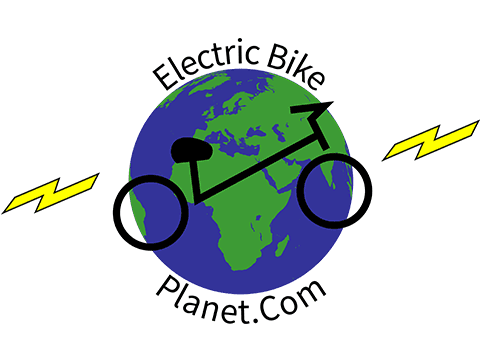
Captain Colyer is an expert in sustainable transportation with a Master’s degree in Environmental Engineering. With over 9 years of experience, he is dedicated to advancing eco-friendly commuting solutions. His work focuses on the latest advancements in electric bike technology and promoting sustainable living practices. At ElectricBikePlanet.com, Captain Colyer shares his in-depth knowledge and practical insights to help readers make informed decisions about electric bikes. Join them on their electric journey for the best e-bike advice and recommendations, and connect on Facebook, Pinterest, and Instagram.


